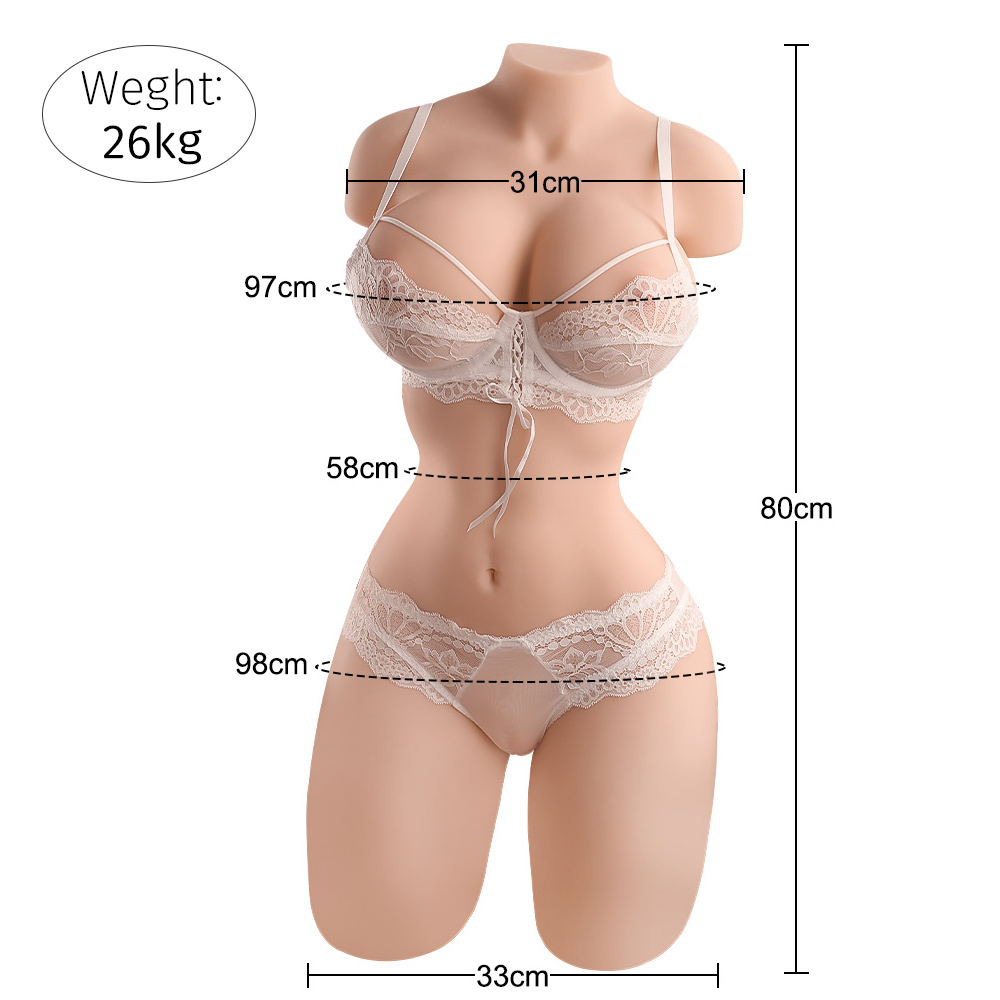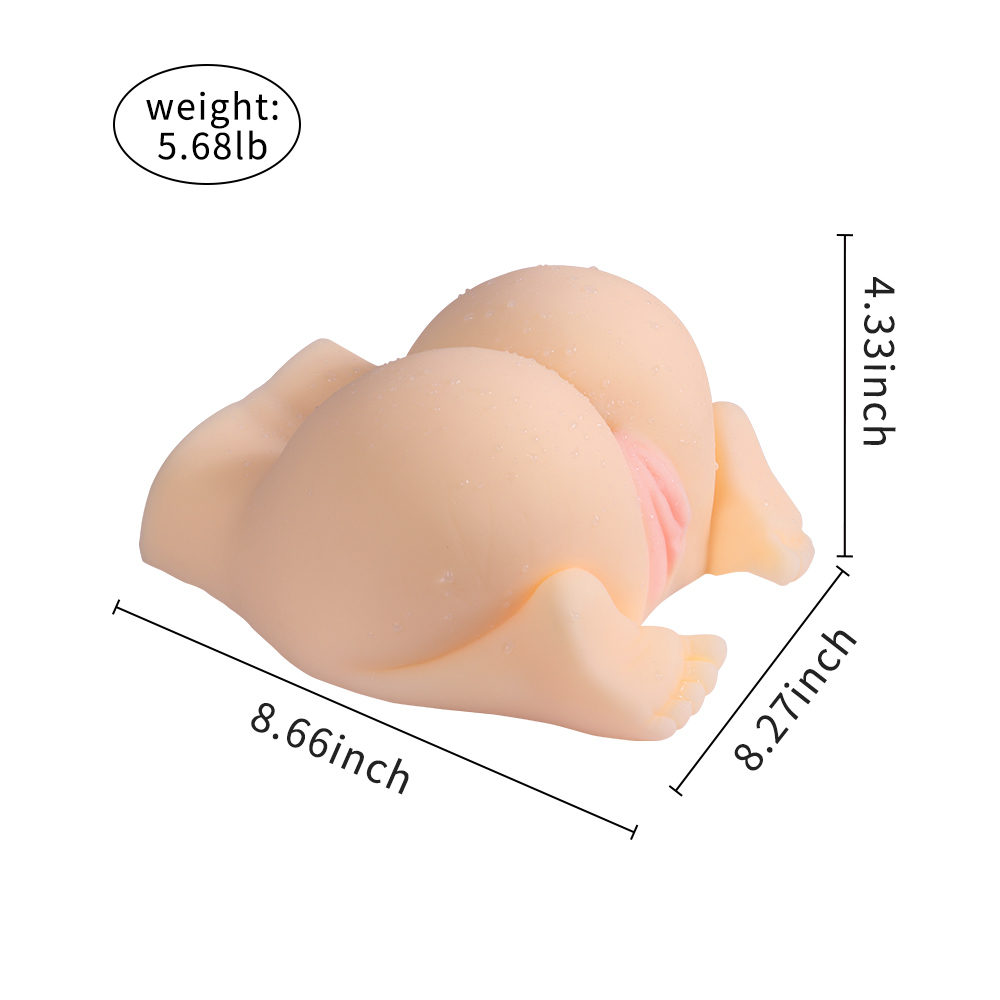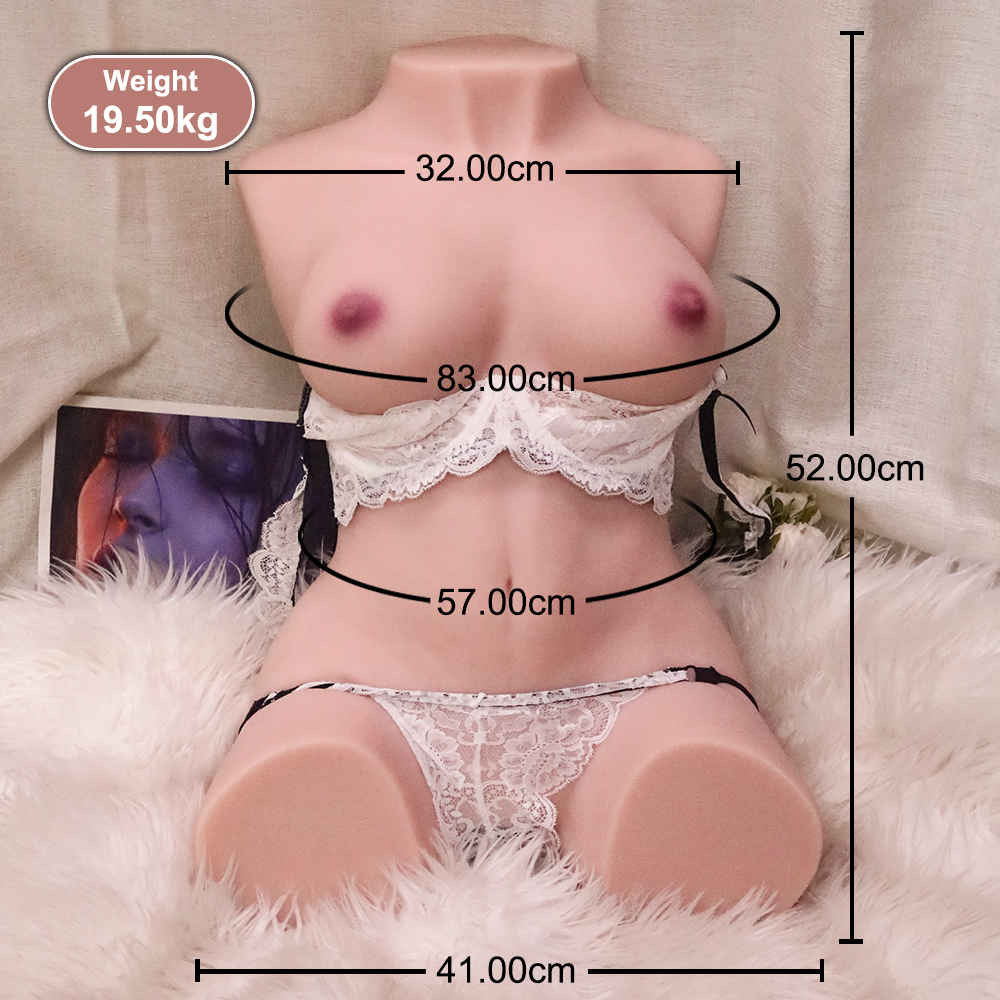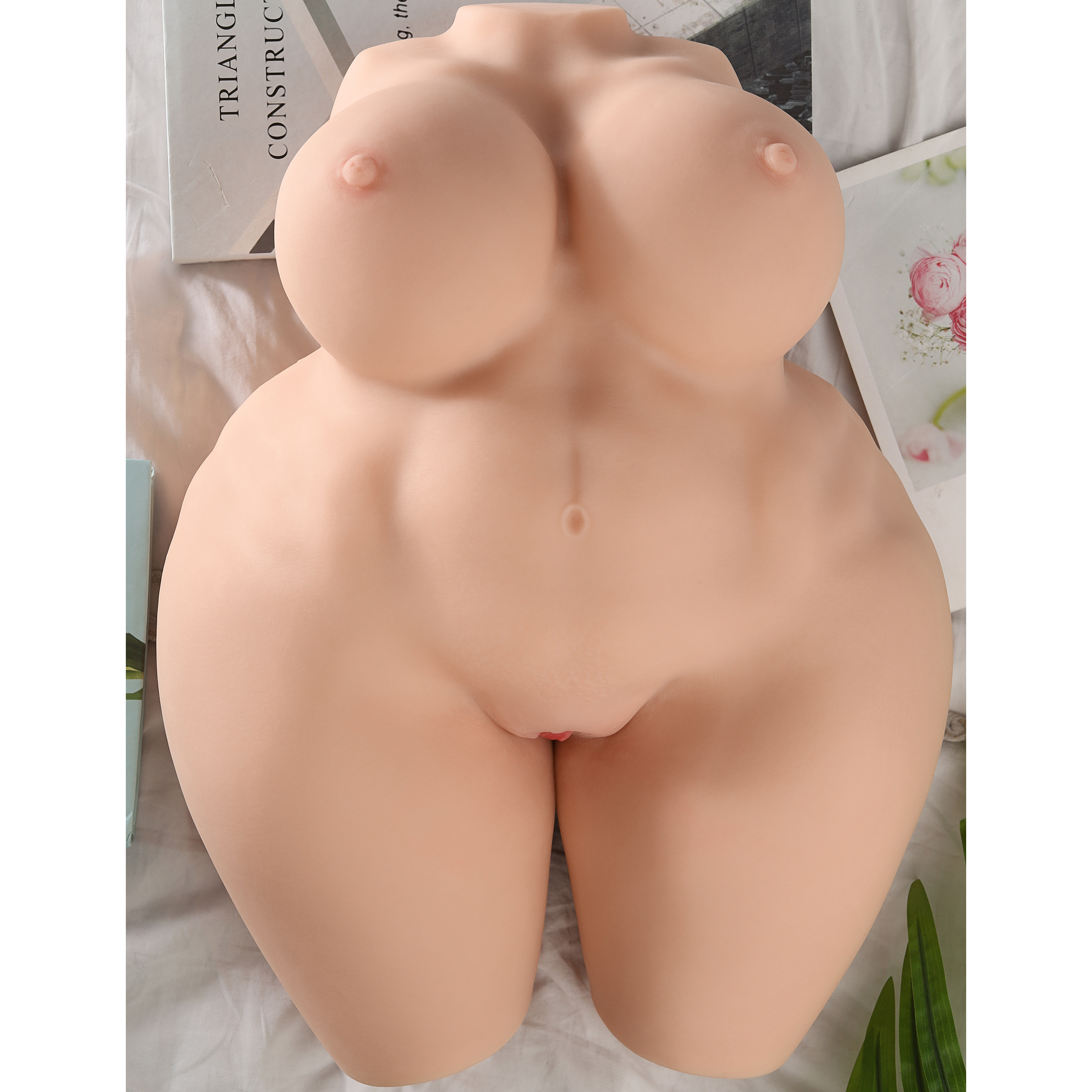
How am I supposed to hide my doll from anyone?
chenglulu2023-10-31T00:04:36+08:00Table of Contents
Welcome to the world of doll enthusiasts, where privacy meets creativity! If you’ve ever wondered how to keep your beloved doll hidden from prying eyes, you’ve come to the right place. In this blog post, we’ll embark on a journey of secrecy, exploring ingenious ways to conceal your doll and safeguard your personal space. From storage solutions to camouflaging techniques, we’ve got you covered! So, join me as we unlock the secrets to hiding your doll, ensuring your private moments remain truly private.
Importance of Privacy
In the world of doll ownership, privacy plays a crucial role in creating a safe and comfortable environment for both the owner and the doll. Understanding the importance of privacy is essential for anyone seeking to enjoy their doll fully and without judgment. Here are several key reasons why privacy matters when it comes to owning a doll:
Personal Space: Privacy allows individuals to establish their personal space, a sanctuary where they can freely express themselves and engage in activities that bring them joy and fulfillment. Owning a doll is a personal choice, and having privacy ensures that this choice is respected and protected.
Emotional Connection: For many doll owners, their dolls hold great emotional significance. They may have invested time, effort, and even emotional attachment into their dolls. Privacy provides a space for owners to nurture and deepen their emotional connection with their dolls, allowing for personal reflection, companionship, and self-expression.
Freedom of Expression: Privacy allows individuals to explore their creativity and imagination without fear of judgment or intrusion. It provides a safe haven where doll owners can experiment with different poses, outfits, and scenarios, fostering a sense of freedom and self-expression that may not be attainable in public or shared spaces.
Comfort and Relaxation: Privacy ensures a sense of comfort and relaxation when engaging with a doll. It allows owners to fully unwind and enjoy their doll’s company without distractions or concerns about others’ opinions. This dedicated private space allows for a more immersive experience, enabling owners to let their guard down and fully embrace their doll’s presence.
Personal Boundaries: Privacy helps establish and maintain personal boundaries, ensuring that the doll remains a private and personal pursuit. It allows owners to control who has access to their doll and when, preventing unwarranted intrusions and maintaining a sense of ownership and control over their doll-related activities.
Confidentiality: Privacy safeguards the confidentiality of a doll owner’s personal choices and preferences. It enables them to keep their doll ownership discreet, should they choose to do so, avoiding potential misconceptions or societal judgments that may arise from sharing this aspect of their life openly.
Emotional Well-being: Privacy contributes to an individual’s emotional well-being by providing a space for self-care and self-expression. It allows owners to engage with their dolls on their own terms, promoting relaxation, stress
Assessing Your Living Space
Assessing your living space is a crucial step when it comes to hiding your doll discreetly. By carefully evaluating your surroundings, you can identify the most suitable areas for concealing your doll while ensuring privacy and security. Here are some key points to consider when assessing your living space:
Room Layout: Take a close look at the layout of your room or living space. Identify areas that are less frequently accessed by others or offer more privacy. These areas could include spare rooms, home offices, or corners of larger rooms that are tucked away from the main traffic flow.
Storage Areas: Explore the storage options available in your living space. Closets, cabinets, and drawers can be excellent hiding spots for your doll. Assess the capacity, accessibility, and level of privacy each storage area provides. Consider empty shelves or compartments that can be repurposed to accommodate your doll discreetly.
Under-the-Bed Storage: Don’t underestimate the potential of the space under your bed. It can serve as a concealed storage area for your doll. Measure the height and clearance under your bed to determine if it’s suitable for housing your doll or if modifications such as risers or storage bins are needed.
Unused Furniture: Evaluate whether you have any unused or underutilized furniture pieces that can double as hiding spots. For example, an antique trunk, a storage ottoman, or a hollowed-out coffee table can provide a discreet and functional storage solution for your doll.
High Shelves or Display Areas: Assess whether you have high shelves or display areas in your living space. These areas can be ideal for showcasing your doll while keeping it out of reach and sight from casual observers. Ensure that the shelves are stable and secure to prevent accidents or damage to your doll.
Concealment in Plain Sight: Consider how you can integrate your doll into your existing decor to make it less conspicuous. Arrange the doll among other decorative items or incorporate it into vignettes or bookshelves to create a sense of normalcy. This camouflage technique can help the doll blend seamlessly with its surroundings.
Accessibility and Security: While assessing your living space, consider both accessibility and security. Ensure that the chosen hiding spots are easily accessible to you but not obvious to others. Strive for a balance between convenience and discretion. If necessary, explore options such as locks or additional measures to enhance the security of your doll’s hiding place.
Lighting and Visibility: Pay attention to the lighting conditions and visibility of the potential hiding spots. Avoid areas that receive direct sunlight or have bright spotlights, as these can draw attention to your doll. Opt for dimmer or more subtly lit areas within your living space for a discreet hiding place.
Storage Solutions
When it comes to hiding your doll discreetly, finding suitable storage solutions is key. Proper storage not only ensures the privacy of your doll but also helps protect it from dust, sunlight, and potential damage. Consider the following storage options to keep your doll hidden and well-preserved:
Dedicated Doll Storage Bags: Invest in a specialized doll storage bag designed to accommodate your doll’s size and shape. These bags often feature padded compartments and secure closures to keep the doll safe during storage. Look for bags made from breathable materials to prevent moisture buildup.
Doll Storage Boxes or Cases: Consider using doll storage boxes or cases, especially if you have multiple dolls or valuable collector’s items. These containers are designed to provide protection and organization. Look for boxes or cases with compartments, adjustable dividers, or foam inserts to keep each doll separate and secure.
Closet Storage: Utilize your closet space to store your doll discreetly. Clear plastic storage bins with lids can be an effective option for keeping your doll hidden while still providing easy access. Label the bins or use dividers to keep different dolls or doll accessories separate and organized within the closet.
Under-the-Bed Storage: Utilize the space under your bed to keep your doll hidden and easily accessible. Choose storage containers or bins with low profiles that can fit comfortably under the bed. Ensure the containers are clean, secure, and offer protection against dust and potential damage.
Display Cabinets with Concealment: If you prefer to showcase your dolls while keeping them discreet, consider using display cabinets with concealed compartments. These cabinets often feature glass display areas for visual appeal, while hidden shelves or drawers behind them provide a space to store your doll out of sight.
Customized Shelving Units: Create a customized shelving unit that incorporates hidden compartments for your doll. These compartments can be concealed with doors, curtains, or panels that blend in with the rest of the shelving unit. This option allows you to showcase your doll collection while maintaining privacy.
Travel Trunks or Vintage Luggage: Repurpose old travel trunks or vintage luggage as storage containers for your dolls. These items often have a nostalgic charm and can blend seamlessly with your decor while keeping your doll hidden from view. Ensure the trunks or luggage are clean, sturdy, and provide adequate protection.
Wall-Mounted Cabinets: Install wall-mounted cabinets or shelves with doors in less conspicuous areas of your living space. These cabinets can be custom-built or purchased to match your decor. Ensure the doors have secure locks or magnetic closures to keep your doll hidden and protected.
Creative Camouflage Techniques
If you’re looking for creative ways to camouflage your doll and make it less conspicuous, here are some techniques you can consider:
Disguise as a Mannequin: Dress your doll in stylish clothing that matches your own wardrobe. Position it in a standing pose near a window or in a corner, creating the illusion of a mannequin or decorative display. This can help your doll blend in seamlessly with the surrounding decor.
Incorporate into Home Decor: Integrate your doll into your home decor by positioning it among other decorative items on shelves or mantels. Arrange it alongside books, plants, or art pieces to make it appear as part of a curated display. This technique helps divert attention from the doll itself.
Use Doll-Size Props: Place doll-size props or accessories near your doll to create the impression of a scene or tableau. For example, position the doll with a small easel and paintbrushes, or place it on a miniature chair with a book and reading glasses. This can make the doll appear as an intentional part of the setting.
Blend with Collectibles: If you have other collectibles or figurines displayed in your home, position your doll among them. Ensure that the doll’s size and aesthetics align with the other items, allowing it to blend in rather than stand out.
Camouflage with Fabric or Covers: Use fabric or covers to conceal your doll discreetly. For example, drape a decorative cloth or throw over the doll when not in use, making it appear as part of the decor. Choose fabrics that match the color scheme or style of your room to maintain a cohesive look.
Utilize Furniture or Display Cabinets: Place your doll inside a closed cabinet or behind glass doors in a display cabinet. This keeps it protected and hidden from immediate view while still allowing you to enjoy its presence. Ensure that the cabinet or furniture piece complements the overall aesthetic of the room.
Position in Less-Visible Areas: Find areas in your living space that are less frequented by visitors or family members. These spaces could include corners, alcoves, or areas behind larger furniture pieces. Position your doll strategically in these areas to minimize the chances of accidental discovery.
Rotate Display Locations: If you have multiple hiding spots or storage options, periodically rotate the display location of your doll. This adds an element of unpredictability and reduces the likelihood of others becoming familiar with its presence in a specific spot.
Utilizing Furniture and Accessories
Utilizing furniture and accessories in creative ways can help you hide your doll discreetly while incorporating it into your living space. Here are some ideas on how to use furniture and accessories for effective camouflage:
Wardrobe or Closet: Dedicate a section of your wardrobe or closet to your doll. Use hangers, hooks, or a small clothing rack to hang doll-sized outfits, making it appear as part of your own wardrobe. This way, your doll remains hidden among your clothes, and the closet offers a convenient storage solution.
Decorative Boxes or Baskets: Place your doll inside a decorative box or basket, preferably one that matches your room’s decor. You can position the box or basket on a shelf, under a side table, or on top of a cabinet, making it appear as a decorative item or storage container rather than a doll.
Display Cabinets or Bookshelves: Utilize display cabinets or bookshelves to house your doll. Arrange it among other collectibles, books, or decorative items to blend it seamlessly with the overall display. Consider positioning the doll towards the middle or lower shelves to make it less noticeable at a quick glance.
Furniture with Hidden Compartments: Look for furniture pieces with hidden compartments, such as ottomans, benches, or coffee tables. These pieces provide a discreet storage area for your doll while serving a functional purpose in your living space. Ensure the hidden compartment is spacious enough to accommodate your doll comfortably.
Dollhouse or Miniature Display: Incorporate your doll into a dollhouse or miniature display. Set up a small-scale scene or vignette where your doll becomes part of a larger miniature world. This not only offers a creative way to display your doll but also adds an element of playfulness and charm to your living space.
Window Seating: If you have a window seat or bench, position your doll discreetly among pillows or cushions. Arrange it to appear as if it’s simply a decorative accent or part of the seating arrangement. This technique can make your doll blend in with the overall window decor.
Wall-Mounted Shelves with Decorative Items: Install wall-mounted shelves and adorn them with decorative items such as framed pictures, plants, or sculptures. Position your doll strategically among these items, ensuring it appears as one of the decorative elements rather than the focal point.
Visual Diversion with Accessories: Use strategically placed accessories or decorative items to divert attention away from your doll. For example, hang an eye-catching piece of artwork near the doll, place a statement vase or sculpture nearby, or position a vibrant rug or floor lamp in the vicinity. The goal is to draw attention elsewhere while your doll remains subtly concealed.
Privacy Screens and Room Dividers
Privacy screens and room dividers can be effective tools for hiding your doll discreetly in your living space. They provide a physical barrier that separates your doll from the rest of the room, creating a private and concealed area. Here are some ways you can utilize privacy screens and room dividers:
Folding Privacy Screens: Use folding privacy screens to create a dedicated area for your doll. Place the screen in a corner or against a wall to create a secluded space. You can position your doll and any accompanying accessories behind the screen, making it less visible from other parts of the room.
Room Divider Shelves: Look for room dividers with built-in shelves or cubbies. These dividers not only create a visual barrier but also provide additional storage space. You can place your doll and related items on the shelves, hiding them discreetly while adding a decorative touch to the room.
Hanging Curtains or Fabric Panels: Hang curtains or fabric panels from the ceiling to create a secluded area for your doll. Choose fabrics that match your room’s decor and style. By enclosing the doll within the curtains or fabric panels, you can effectively keep it hidden from view.
Sliding Panels or Barn Doors: Install sliding panels or barn doors to create a hidden space for your doll. These sliding mechanisms allow you to open or close off the doll’s area as needed. Choose door designs that complement your room’s aesthetics, ensuring that the doll remains concealed when the doors are closed.
Customized Partitions: If you’re looking for a more customized solution, consider building or commissioning a partition that specifically caters to hiding your doll. You can design the partition to blend seamlessly with your room’s style while incorporating doors, shelves, or compartments for discreet doll storage.
Bookcase Room Divider: Utilize a bookcase as a room divider to hide your doll. Position the doll and related items on shelves within the bookcase, ensuring they are concealed from one side while still accessible to you. Arrange books, decorative items, or plants in front of the doll to further camouflage its presence.
DIY Folding Screens: Get creative and make your own folding screen using materials like wood, fabric, or even repurposed doors. Customize the design and dimensions to suit your living space and ensure the screen provides enough coverage to hide your doll effectively.
Portable Partitions: If you prefer flexibility, consider using portable partitions that can be easily moved around your living space. These partitions come in various styles and materials, including fabric, wood, or metal. Position the partition to create a secluded area for your doll whenever needed.
Planning and Scheduling
Planning and scheduling are essential for managing your time effectively and staying organized. Whether it’s for daily tasks, work projects, or personal commitments, having a structured plan helps ensure productivity and reduces stress. Here are some tips for effective planning and scheduling:
Set Clear Goals: Start by defining your goals, both short-term and long-term. Clearly articulate what you want to achieve, whether it’s completing a project, meeting deadlines, or pursuing personal aspirations. Having well-defined goals provides direction and purpose for your planning.
Prioritize Tasks: Determine which tasks or activities are most important and prioritize them accordingly. Use techniques like the Eisenhower Matrix, which categorizes tasks based on their urgency and importance. Focus on high-priority tasks first to ensure you allocate your time and energy efficiently.
Break Down Tasks: Divide larger tasks or projects into smaller, more manageable sub-tasks. Breaking them down makes them less overwhelming and allows you to plan and schedule them more effectively. Set realistic milestones or deadlines for each sub-task to track progress and stay on track.
Use a Planner or Digital Tools: Choose a planning method that suits your preferences, whether it’s a physical planner, a digital calendar, or task management apps. Find a tool that allows you to schedule and organize your tasks, set reminders, and allocate time slots for specific activities. Experiment with different tools to find what works best for you.
Time Blocking: Allocate specific time blocks for different activities or tasks. Assign dedicated time slots for focused work, meetings, breaks, and personal activities. Time blocking helps you manage your time more efficiently and ensures you have designated periods for different types of tasks.
Be Realistic with Time Estimates: When scheduling tasks, be realistic about the time needed to complete them. Consider factors like task complexity, potential interruptions, and your own working pace. Avoid overloading your schedule and allow buffer time between tasks to accommodate unexpected delays or additional work.
Review and Adjust: Regularly review your schedule and make adjustments as needed. Assess your progress, identify any bottlenecks or areas where you’re falling behind, and adapt your schedule accordingly. Flexibility is key to accommodate changes and unexpected events that may arise.
Use Reminders and Notifications: Take advantage of reminders and notifications provided by your planning tools. Set alerts for important deadlines, upcoming meetings, or time-sensitive tasks. These reminders help keep you on track and ensure you don’t miss any critical commitments.
Practice Time Management Techniques: Explore different time management techniques such as the Pomodoro Technique (working in focused bursts with short breaks), the Two-Minute Rule (taking immediate action on quick tasks), or the Eat the Frog method (tackling the most challenging task first). Experiment with these techniques to find what boosts your productivity.
Maintain Balance: While scheduling your tasks and commitments, remember to allocate time for self-care, relaxation, and activities that bring you joy. Maintaining a balanced schedule helps prevent burnout and promotes overall well-being.
Communication with Roommates or Partners
Effective communication with roommates or partners is crucial for maintaining a harmonious living environment and building strong relationships. Here are some tips to enhance communication in such situations:
Establish Open and Honest Communication: Create an atmosphere of trust and openness from the beginning. Encourage everyone to express their thoughts, concerns, and preferences without fear of judgment or reprisal. Foster a culture where open communication is valued and appreciated.
Schedule Regular Check-Ins: Set aside dedicated time for regular check-ins or house meetings. This allows everyone to discuss any upcoming events, address concerns, and share updates. It’s an opportunity to ensure everyone is on the same page and can contribute to decision-making.
Active Listening: Practice active listening when your roommates or partners are speaking. Give them your full attention, maintain eye contact, and avoid interrupting. Show empathy and understanding, and ask questions to clarify their perspective. Active listening demonstrates respect and helps avoid misunderstandings.
Use “I” Statements: When expressing concerns or discussing issues, use “I” statements instead of accusatory language. For example, say, “I feel overwhelmed when there are dirty dishes in the sink” instead of “You always leave dirty dishes for others to clean.” “I” statements take ownership of your feelings and promote a more constructive conversation.
Be Respectful and Considerate: Treat your roommates or partners with respect and consideration. Be mindful of their boundaries, personal space, and individual needs. Avoid making assumptions or taking actions that could infringe upon their comfort. Respectful behavior fosters positive communication and a healthy living dynamic.
Conflict Resolution: Conflicts are inevitable, but it’s essential to address them promptly and constructively. When conflicts arise, listen to all perspectives, seek common ground, and work towards a mutually agreeable solution. Focus on the issue at hand rather than personal attacks. If needed, involve a neutral third party or mediator to facilitate the resolution process.
Use Written Communication for Important Matters: For significant decisions, agreements, or shared responsibilities, consider using written communication. This can include email, shared documents, or a household messaging platform. Written communication helps ensure clarity, provides a reference point, and reduces the chances of miscommunication.
Flexibility and Compromise: Living with roommates or partners requires flexibility and compromise. Recognize that everyone has different preferences and priorities. Be willing to negotiate and find solutions that accommodate everyone’s needs to maintain a balanced and fair living arrangement.
Respect Personal Boundaries: Understand and respect each other’s personal boundaries. Communicate openly about privacy needs, quiet hours, or specific rules for shared spaces. Respecting personal boundaries promotes a sense of security and comfort within the living environment.
Appreciate and Express Gratitude: Take the time to acknowledge and appreciate the efforts and contributions of your roommates or partners. Express gratitude for their help, cooperation, or small gestures that enhance your living experience. Showing appreciation strengthens relationships and fosters a positive atmosphere.
Noise Reduction Strategies
Noise reduction strategies can help create a quieter and more peaceful environment, whether you’re dealing with external noise from the surroundings or trying to minimize noise within your own space. Here are some effective noise reduction strategies:
Use Soundproofing Materials: Install soundproofing materials such as acoustic panels, soundproof curtains, or foam insulation on walls, ceilings, and windows. These materials absorb and dampen sound waves, reducing the amount of noise that enters or exits a room.
Seal Gaps and Cracks: Identify and seal any gaps or cracks in doors, windows, and walls. These small openings can allow noise to seep in or out of your space. Weatherstripping, caulking, or using draft stoppers can help minimize noise infiltration.
Add Carpets or Rugs: Place carpets or rugs on hard floors to absorb impact noise and reduce reverberation. Thick, dense rugs with padding underneath are especially effective in absorbing sound and minimizing footstep noise.
Use Heavy Drapes or Blinds: Install heavy drapes or blinds on windows to block external noise. These dense window coverings can act as a barrier against noise coming from the outside.
Rearrange Furniture: Strategically arrange furniture to create a buffer zone between the noise source and your living area. Position bookshelves, cabinets, or other bulky furniture against walls that face noisy areas. These items can help absorb and deflect sound waves.
Consider White Noise: White noise machines or apps can be used to mask or drown out background noise. These devices produce a constant, soothing sound that can help you relax and focus while minimizing the impact of other noises.
Use Headphones or Earplugs: When dealing with unavoidable noise, wearing headphones with noise-canceling features or using earplugs can provide immediate relief. These devices help block or reduce external noise, allowing you to concentrate or relax in a noisy environment.
Establish Quiet Zones: Designate specific areas within your living space as “quiet zones.” These zones can be low-traffic areas where noise is minimized, allowing for relaxation, reading, or work without distractions.
Communicate with Neighbors: If noise is coming from neighboring apartments or houses, consider having a polite conversation with the individuals involved. Explain the issue and kindly request that they be mindful of noise levels, especially during quiet hours.
Soundproof Doors: Install door sweeps or draft stoppers at the bottom of doors to reduce sound transmission. Adding weatherstripping around the door frame can also help create a tighter seal and minimize noise leakage.
Balancing Personal Life and Doll Ownership
Balancing your personal life with your passion for doll ownership is important to ensure that both aspects of your life receive the attention they deserve. Here are some tips to help you strike a healthy balance:
Set Boundaries: Establish clear boundaries between your personal life and your doll ownership. Determine how much time, energy, and resources you want to allocate to your hobby. This will help you maintain a balanced perspective and prevent your doll ownership from overwhelming other areas of your life.
Prioritize Responsibilities: Identify your personal and professional responsibilities and prioritize them accordingly. Make sure you fulfill your obligations and commitments before dedicating time to your doll ownership. By staying organized and managing your time effectively, you can create space for both aspects of your life.
Time Management: Develop effective time management skills to make the most of your available time. Create a schedule or routine that includes dedicated time for your doll-related activities. This allows you to enjoy your hobby while ensuring you have ample time for other important aspects of your life.
Multitasking Opportunities: Look for opportunities to integrate your doll ownership into your personal life. For example, you can involve friends or family members in doll-related activities, attend doll conventions or events together, or join online communities to connect with like-minded enthusiasts. By combining your hobby with social interactions, you can enjoy your dolls while nurturing personal connections.
Flexibility and Adaptability: Recognize that priorities and circumstances may change over time. Stay flexible and adaptable to adjust your doll ownership activities as needed. Sometimes, certain life events or responsibilities may require you to temporarily reduce your involvement in your hobby. Embrace these changes and find a balance that works for you during different phases of your life.
Self-Care and Well-being: Remember to prioritize self-care and maintain your overall well-being. Engage in activities that recharge you and bring you joy outside of your doll ownership. This can include hobbies, exercise, spending time with loved ones, or pursuing personal interests. Taking care of yourself ensures that you have the energy and enthusiasm to enjoy your dolls and other aspects of your life.
Financial Considerations: Be mindful of your financial situation and set a budget for your doll ownership. It’s important to strike a balance between enjoying your hobby and maintaining financial stability. Plan your doll-related purchases and expenses within your means to avoid undue stress or strain on your personal life.
Reflect and Evaluate: Regularly reflect on your priorities and evaluate how well you’re balancing your personal life and doll ownership. Assess if any adjustments are needed and make necessary changes to maintain a healthy equilibrium. Periodically reevaluating your approach ensures that you remain mindful of your overall well-being.
Torso sex dolls buy
-

 Add to cartQuick View
Add to cartQuick View -

 Add to cartQuick View
Add to cartQuick View -

 Add to cartQuick View
Add to cartQuick View -
-25%

 Add to cartQuick ViewSex Doll/Dolls, Silicone Sex Torso, Up to 30%
Add to cartQuick ViewSex Doll/Dolls, Silicone Sex Torso, Up to 30%Brandi Ordinary Style/Silicone Sex Torso
0 out of 5$530.00Original price was: $530.00.$395.00Current price is: $395.00. -

 Add to cartQuick View
Add to cartQuick View -

 Add to cartQuick View
Add to cartQuick View -

 Add to cartQuick View
Add to cartQuick View -
-39%

 Add to cartQuick ViewSex Doll/Dolls, Silicone Sex Torso, Up to 30%
Add to cartQuick ViewSex Doll/Dolls, Silicone Sex Torso, Up to 30%Finished product – Elma doll Ordinary Style/Silicone Sex Torso
0 out of 5$320.00Original price was: $320.00.$195.00Current price is: $195.00.
Hiding your beloved doll is all about creativity, practicality, and respect for personal boundaries. By implementing these tips, you can maintain your doll’s privacy while enjoying your companionship to the fullest. Remember, discretion is key, and finding the right balance between your doll and your personal life will ensure a satisfying and worry-free experience. Happy doll adventures!


-2-450x231.jpg)







Leave a Reply